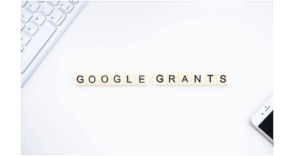Google Grant Ads White Paper
Below is a Google Ad Grants White Paper. You can also download the Google Ad Grants White Paper.
Google Ad Grants is an excellent fundraising and marketing tool in which Google provides approved nonprofits and charities $10,000 per month in free advertising credit to spend on Google Ads. This $10,000 monthly allotment automatically renews each month so long as the organization stays in compliance with the Google Ad Grants requirement rules. There is no maximum benefit and there is no additional application for future months or years.
With the extreme generosity of the program, over 100,000 nonprofits worldwide have taken advantage of Google Ad Grants at some point since the program was established in 2003 with around 35,000 nonprofits currently enrolled in the program. While this is a large number it means that an overwhelming percentage of nonprofits have never taken part in the program and that of those that had, most have not been able to keep up with the program’s requirements and thus are no longer receiving Google Ad Grants. Once the grant is lost, it is almost impossible to get it activated again.
Google Ad Grants can be a great fundraising and messaging option for almost all nonprofits. In America, for example, all 501(c)(3) organizations qualify for Google grants with the exception of schools, hospitals, or government organizations. Other countries have very similar rules though they vary slightly from country to country. In addition, to the fact that most charities and nonprofits qualify for a Google Grant, it is also the case that there is not a competition for these ad grants and instead any organization that is eligible and submits the application correctly can get a grant. You hear that right – there is not just a set number of grants given out. Instead, Google gives out grants to all nonprofits that meet the eligibility criteria and navigate through the application submission process.
Free advertising and marketing is something that can help just about every nonprofit so we recommend that every nonprofit sign up for Google Grants and the Google Ads allowance that it can provide. The ads can be used to drive thousands of additional individuals to your website each month which can help reach new supporters and can amplify your message.
How Can Nonprofits Use Google Ad Grants?
There are many great ways that nonprofits and charities can use a Google Grant and the free Google Ads that come with it. Among these are:
- Requesting donations from donors and potential donors.
- Increasing their potential donor database by collecting contact information when website visitors fill out a contact form, subscribe to a newsletter, or fill in information to request access to other resources that the organization makes available.
- Advocating and making calls to action such as requesting website visitors sign a petition.
- For use in public education and program services allowing nonprofits to get their message out to a wider audience and inform the public about services it can provide and what its mission is.
- Recruiting volunteers, members, and supporters who can help keep the organization running and improve its inner workings.
- Publicizing events and meetings. As part of the publication of these meetings, it can also be used to sell tickets.
Your Google Grant can be used for several or all of these and thereby can fill many different organizational needs. It is a dynamic and powerful enough tool that pretty much any nonprofit that has a website could benefit from Google Ad Grants.

Is the Google Grant Program Only for Large Nonprofits and Charities?
Not at all. Smaller nonprofits stand to gain just as much as large nonprofits by the increased web traffic and potential for additional donations these ads can bring. The Google Grants program is made for both large and small nonprofits and everything in between.
The important thing that determines the effectiveness of a Google Grant and Google Ads campaign is not the size of the organization, but if the organization has content that the reader will find interesting and engaging spark engagement and if their ads are compelling and encourage people to click on them to learn more.

Is My Organization Eligible for Google Grants?
Most likely the answer is yes. Most nonprofits and charities qualify for Google Grants and the program accepts charitable organizations and NGOs from over 50 countries. In the United States, the main requirement is that the organization has received a 501(c)(3) tax-exempt status from the IRS, which the vast majority of nonprofits in America have. Charities and NGOs in other countries have similar requirements in which Google just wants to see that they appear to be legitimate organizations. In addition, to this basic requirement, the organization must meet a few other requirements:
- The charity cannot be a hospital, a college, a school, or a governmental body.
- The organization must agree to the terms of service for both Google Ads and Google for Nonprofits.
- The organization’s website must be hosted on its own separate domain name as opposed to just being under some other entity’s domain or being on a third-party site such as Facebook.
- An SSL certificate needs to be installed on your website.
This is pretty much the bulk of the requirements for Google Ad Grants and most charities meet these or easily could. Thus most charities are eligible to apply for a Google Grant. The application window is always open and it is not a competition where you are competing against other charities, but instead, every organization that qualifies and applies correctly can get a grant.

How Do I Apply for a Google Grant?
Applying for a Google Ad Grant is not as straightforward as it could be. There are multiple steps that must be completed to submit the Google Ad Grants application. When you use our Google Grants management service we will complete the entire Google Grants acquisition process for you at no charge so that is definitely the easiest way to apply for Google Grants, but if you’d like to go through the process yourself, the steps you would take are:
- In most countries, such as the United States, the first step is registering as a charity with TechSoup.org
- Get the necessary validation token from TechSoup that you will need for your Google for Nonprofits registration.
- Then the organization needs to enroll in Google for nonprofits
- Make sure you have Google Analytics set up on your website
- You can then apply for Google Grants using the Google Grants application form. Make sure you are careful when you submit the application and you initially set up your nonprofit’s Google Ads account as these can be tricky.
If your organization already has a TechSoup account or a Google for Nonprofits account and you have access to it, you can skip some of these steps.
There will be some waiting time at various parts of the process, but at the end of the process, you will hopefully be accepted into the program and can receive up to $10,000 per month in Google Ads which is quite a large in-kind gift that can be very valuable.
Ongoing Google Ads Grant Compliance Requirement
Once you are accepted into the Google Ads program, then begin the real task of continuing to improve and refine your Google Ads account and making sure you comply with Google Ad Grants complex continuing eligibility requirements. Failure to keep up with these ongoing requirements will lead to a suspension of your account. Once your account is permanently suspended, the golden goose is gone. Google does not provide a way to appeal or get the account reinstated.
Among the other ongoing Google Grants requirements, you will need to make sure that you continue to do the following:
- Maintain a clickthrough rate (CTR) for your ads of at least 5% which is relatively high. This can be quite hard for a nonprofit to maintain.
- Log in to your Google Ads account at least every 30 days
- Make changes to your ads, keywords, or other facets of your Google Ads account at least once every 90 days
- Complete the annual survey that Google sends you.
- Have conversion tracking set up on your site and have at least one conversion per month.
The ongoing requirements, especially the 5% CTR are probably a lot more work and a tougher challenge than getting into the program to start with. If you need help with your Google Grants acquisition or maintenance, contact us today! We specialize in Google Ad Grants and will make sure you get into the program and stay in the program and that your Google Ads account is optimized to give you the most benefit.
Below is an in-depth list of the ongoing requirements for Google Ad Grants since so many nonprofit Google Ads accounts have this requirement and it is fundamental in that if the Google Ad Grants requirements are not met it can lead to a suspension of the nonprofit’s account. Google lays out its requirements in the Google Ad Grants Policy Compliance Guide, but the most important rules to note are:
Performance:
- Accounts must maintain a 5% click-through rate (CTR) each month. That is a high bar and requires you to continually optimize your account and monitor the click-through rates of each of your ads.
- Your account needs to have at least one conversion every month. That means that you will need to have conversion tracking set up correctly with at least one meaningful goal and that the conversion tracking gets triggered. It is best to set up the conversion rules in Google Analytics and then reference it in Google Ads.
Account Structure:
- Your campaign must contain at least 2 ad groups.
- Each ad group needs to have at least 2 ads in it.
- Your account must have at least 2 sitelink ad extensions. Sitelinks extension appears in your ads as a hyperlink that directs users to specific pages of your website.
Keywords:
- Each Keyword in your account must have a quality score higher than 2. Quality scores range from 1 to 10 and quality scores of 1 and 2 mean the landing pages and ads are not really relevant to what was being searched for.
- With only a few exceptions, keywords that you set up must be composed of multiple words.
Activity:
- You must log in to the account at least monthly
- You must implement changes to the account at least once every 90 days
- You can only advertise domains that you own and that you submitted to Google. You cannot have ads that send people to third-party sites such as your social media pages.
While Google Grants has a lot of requirements and some can be tough to meet, they are largely there to improve your Google Ads Account. In most cases, it is in your best interest to go beyond the basic requirement that Google Grants requires. So while Google Grants may require you to have 2 ads per ad group, your account will be even more successful if you increase the number of ads per ad group even higher. Similarly, having more campaigns is also good practice.
Optimizing Your Google Ads Account
It can be a daunting task to set up a Google Ad Grants account. Nonprofits in particular have additional considerations to focus on when they set up their Google Ads Account than businesses do.
The requirements imposed by Google Ad Grants shape how a nonprofit’s Google Ads account is set up. In addition, there are also best practices that charities should follow to get the best results from their Google Ads Account. Following the guidance in this article should help increase the overall effectiveness of these ads in spreading their message, attracting donors, and in recruiting volunteers.
While this white paper is quite detailed, there are some things we are just not able to cover. If you want more one-on-one help you can schedule a free consultation with us regarding your Google Ads and Google Grants accounts. After all, we are experts and we specialize in Google Grants and Google Ads for nonprofits.
Organizations should set up a campaign for each of the main goals that they are using their Google Ads account to try to accomplish. For example, there could be one for increasing its mailing list, one for recruiting volunteers, one for informing the public about events they are having, and so forth. This is beneficial in that it will both make the campaign easier to manage and it will also cause your ads to be more tailored to the searches that you receive.
Each of the campaigns should have at least a few ad groups. Ad groups should be focused on a specific topic. The keywords, ads, and ad extensions under that ad group should also be similarly focused. The more you can target your ads, the better results that you will have.
Each ad group should contain several ads. Google’s algorithm will make a determination of which would be most likely to be clicked in response to a specific web search. By including more ads, you are giving Google more choices with which to pick and better meet the web searcher’s needs. A similar technique for improving clickthrough rates is to have a Responsive Search Ad in each ad group. Responsive Search Ads are a collection of ad headlines and ad text that allows Google to mix and match the headline and ad body that it thinks will be most effective.
While ads are very short pieces of text, it is important that they should be well-written by someone with some experience in that area. You may want to include call-to-actions in your ads. you will certainly want your ads to be engaging and grab a reader’s attention so spend time refining the wording of your ads and improving it over time.
Along with the ads themselves, you should pay attention to your intended audience and make sure that your ads are getting to the appropriate eyeballs. In Google Ads, you can select specific geographic areas in which to show your ads. You can also specify what days and times an ad is shown and in response to what searches and gets shown. If one of your ads is repeatedly shown for a search that is not relevant you can either narrow your keyword or you can add a negative keyword that stops the ad from being shown if a certain word is included in the search.
Generally, for experienced individuals, it is best to control as many aspects of the account yourself rather than let Google control it so it is generally best to use manual bidding and phrase keywords rather than broad keywords. However, for those who have a Google Grants account rather than a paid Google Ads account using Maximize Conversions for at least one Campaign may make sense.
Use as many Keywords as you can. Keywords can be any word or phrase or other grouping of words that searchers may search on. Those searching for different keywords may be looking for different things and should receive tailored ads for what they are looking for. You may have trouble appearing near the top of the page for certain popular keywords. That is particularly true with Google Grants since ads from a Google Grants account are shown below all ads from paid Google ads accounts. Nonprofits thus will benefit from including long-tailed keywords that appear less often in searches but are still valuable.
Make significant use of Ad Extensions. Google Ad Extensions appear as part of the ad but provide extra information or capabilities to the individual searching the web. They can help increase the chance that an ad will get clicked on. Ad extensions that you should think about using if appropriate are:
- Call extensions that list the organization’s phone number in the ad so that people can easily call it. these can be especially useful for those searching on a phone.
- Location extensions which can show the organization’s address and can be valuable for organizations serving a specific geographic area.
- Sitelink Extensions which provides links to specific pages of your website. Having 4 to 6 sitelinks is usually a good practice for improving the clickthrough rates of ads.
- Callout extensions which are additional phrases included in an ad where an organization can include its pitch.
- Message extensions can allow searchers to easily send a text message to your organization if your organization is able to respond effectively to text messages.

How to Track Google Ad Results and Google Grant Results
Now that you have set up your Google Ads account, you will want to continually improve it in order to get better results. In order to know if you are improving things, you first need to have a baseline. You should look intently at the information in Google Ads and in Google Analytics and make sure that clicks from ads and website traffic continues to be high or improve over time. However, even more important is for you to focus on conversions.
You should set up conversion goals for any action that you want to track such as phone calls driven by ads, contact form submissions, donations, etc. Conversions should be segmented out by type so you have more granular data. Conversions are probably the most important metric to focus on to ensure your Google Ads account and your campaigns are achieving your organization’s goals.

How To Get Your Website Ready for Google Ads
Just as important as setting up your Google Ads account well, you should also look over your website and make sure that it is set up. This will lead to better results for your Google Ads accounts and your Google Ad Grants ad allocation. Google Grants only permit you to run ads that have a Quality Score of 3 or higher and having additional content or better-written pages can lead to better Quality Scores for ads.
Ensure your website is user-friendly and easy to use. It is important that it works well and loads fast on mobile devices. You should also strive to make sure it has a significant amount of content and that web pages on it are focused on one specific topic. Adding additional website pages and blog posts will often help attract visitors to your site. It should have several authoritative and detailed pages that will be useful or informative to readers.

How To Effectively Use Google Ad Grants
You should go into the Google Ads management process with the mindset that you are going to continue to adjust and improve your account and over time you will increase the effectiveness of your ads and keep up with the constant stream of Google Ads changes that Google releases. Go in knowing that it will take a lot of time to do the job well.
To approach Google Ads management in a professional manner, you should systematically test the changes you make to ensure they are having the desired results. This is typically done through A/B tests where you compare two options against each other to see which yields the best results. You can also use A/B tests to refine your website and landing page verbiage as well.
As you do periodic reviews of your Google Ad account, you should strive to use the full Google Grant amount of $10,000 per month. Most nonprofits do not use much of their allocation of free Google Ads and are effectively leaving money on the table. It takes a lot of time to get the most out of your Google Ads account, but it is a worthwhile investment.
If your free time or a lack of expertise limits you from doing frequent, detailed analyses of your Google Ads account, please think about using our services to handle this process for you. We, at Grant Republic, are experts in Google Grants and Google Ads for nonprofits and can make your account much more powerful so you get much more value out of it. We are certified Google Partners and are the experts in this field. Schedule a free no no-obligation consultation with one of our Google ad experts today or email us at info@grantrepublic.com.





